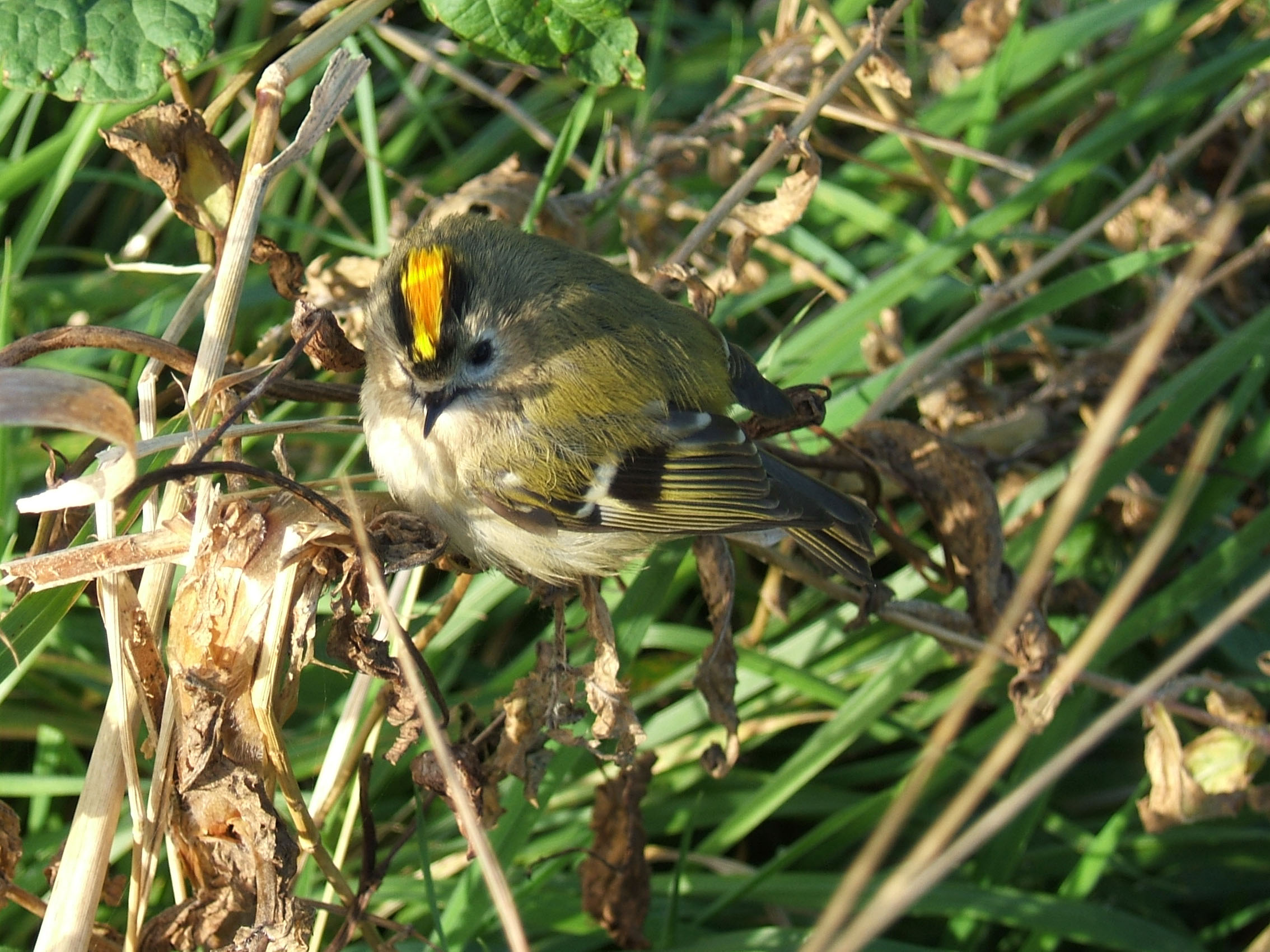- Kinglet
Taxobox
name = Kinglets

image_width = 240px
image_caption = Goldcrest "Regulus regulus"
regnum =Animal ia
phylum = Chordata
classis =Aves
ordo =Passeriformes
subordo =Passeri
familia = Regulidae
genus = "Regulus"
genus_authority = Cuvier, 1800
subdivision_ranks = Species
subdivision = See text.The kinglets or crests are a small group of birds sometimes included in theOld World warbler s, but are frequently given family status because they also resemble the titmice. The scientific name Regulidae is derived from theLatin word "regulus" for "petty king" or prince, and comes from the coloured crowns of adult birds. This family has representatives inNorth America andEurasia . There are seven species in this family; one, theMadeira Firecrest , "Regulus madeirensis", was only recently split fromFirecrest as a separate species. One species, theRuby-crowned Kinglet , differs sufficiently in its voice and plumage to occasionally be afforded its own genus, "Corthylio".Kinglets range in size from 9 to 11 cm and are amongst the smallest of the passerines, and indeed of all birds. They have medium-sized wings and tails, and the tails of all species are incised at the tip. The bill is small and needle-like. The
plumage is overall grey-green. Most have an eye-ring or a stripe at thesupercilium , although the slightly atypical Ruby-crowned Kinglet lacks this. The males possess a colourful crown patch. They have one specific feather which projects forward over the nares (again lacking in the Ruby-crowned Kinglet).Generally kinglets are adapted to
conifer forests, although there is a certain amount of adaptability and most species will use other habitats, particularly during migration. They have a distribution that takes in the northernboreal forest s, but also extend down as far as the subtropics in places. A number of insular populations have evolved into separate species and subspecies.The tiny size and rapid metabolism of kinglets means that they must constantly forage in order to provide their energy needs. They will continue feeding even when nest building. Kinglets prevented from feeding may lose a third of their body weight in twenty minutes and may starve to death in an hour. Kinglets are insectivores, preferentially feeding on insects such as
aphid s andspringtail s that have soft cuticles. Prey is generally gleaned from the branches and leaves of trees, although in some circumstances prey may be taken on the wing or from the leaf litter on the ground.The nest are small, very neat cups, almost spherical in shape, made of moss and lichen held together with spiderwebs and hung from twigs near the end of a high branch of a conifer. They are lined with hair and feathers, and a few feathers are placed over the opening. These characteristics provide good insulation against the cold environment. The female lays 7 to 12 eggs, which are white or pale buff, some having fine dark brown spots. Because the nest is small, they are stacked in layers. The female incubates; she pushes her legs (which are well supplied with blood vessels, hence warm) down among the eggs. The eggs hatch after 15 to 17 days. The young stay in the nest for 19 to 24 days. After being fed, nestlings make their way down to the bottom of the nest, pushing their still-hungry siblings up to be fed in their turn (but also to be cold).
Species
*
Goldcrest , "Regulus regulus" - in most of Europe and Asia.
*Tenerife Goldcrest orOrangecrest , "Regulus teneriffae", split from Goldcrest as separate species - in easternCanary Islands .
*Firecrest , "Regulus ignicapillus" - in Europe and north Africa.
*Madeira Firecrest , "Regulus madeirensis" - inMadeira .
*Taiwan Firecrest orFlamecrest , "Regulus goodfellowi" - inTaiwan .
*Golden-crowned Kinglet , "Regulus satrapa" - in north America.
*Ruby-crowned Kinglet , "Regulus calendula" - in north America."Regulus bulgarius" is a prehistoric species known only from
fossil s. Its remains have been found in theLate Pliocene deposit ofVarshets ,Bulgaria .References
*Alström, P.(2006, February). Phylogeny and classification of the avian superfamily Sylvioidea. "Molecular Phylogenetics and Evolution", 38 (2). Retrieved March 2006, from http://portal.isiknowledge.com/portal.cgi
*Bent, A.C. (1964). "Life histories of North American thrushes, kinglets, and their allies". New York: Dover Publications
*Crick, Humphrey (2003). Firecrests and Kinglets. In Perrins, Christopher, editor, "The Firefly Encyclopedia of Birds". Firefly Books. ISBN 1-55297-777-3.
*Cumming, E.E. (2004) Habitat segregation among songbirds in old-growth boreal, mixed wood forest. "Canadian Field-Naturalist". 118: 1: 45-55
*Del Hoyo, J.; Elliot, A. & Christie D. (editors). (2006). "
Handbook of the Birds of the World ". Volume 11: Old World Flycatchers to Old World Warblers. Lynx Edicions. ISBN 849655306X.*Gill, F. (1995). "Ornithology". USA: W.H. Freeman.
*Hayes, J.P. (2003) Response of birds to thinning young Douglas-fir forests. "Ecological Applications". 13:5: 1222-1232
*Heinrich, Bernd. (2003) Overnighting of Golden-crowned Kinglets during winter. "Wilson Bulletin". 115:2: 113-114
*Humple, D.L.,et al. (2001) Female-biased sex ratio in a wintering population of Ruby-crowned Kinglets. "Wilson Bulletin". 113:4: 419-424
*Podlesak, D. W. (2005). Stable isotopes in breath, blood, feces and feathers can indicate intra-individual changes in the diet of migratory songbirds. "
Oecologia ", 142: 4: 501-510.External links
* [http://ibc.hbw.com/ibc/phtml/familia.phtml?idFamilia=126 Kinglet videos] on the Internet Bird Collection
Wikimedia Foundation. 2010.
